An In-depth Guide to Product Roadmaps - Software, Templates, and Examples

What is a product roadmap?
A product roadmap is a tool to help you lay out the vision and strategic direction of your product over time.

It is perhaps one of the most important tools in your product manager toolkit, as it’s the key to showing stakeholders that you are making the right decisions at the right time.
On top of this, a product roadmap is a plan for how your product contributes to wider company visions or goals.
This means it's not just a strategic document but an action-based one too. It will plan out the steps you'll need to take to execute a strategy.
A good product roadmap will enable stakeholders, team members, and product managers to understand the how what, and why of the product at a glance.
A product roadmap, therefore, needs to do several things:
Communicate the product vision and how to get there in a series of high-level steps or themes.
Guide team members towards a strategic goal and show the progress that’s already been made.
Get stakeholders moving in the same direction.
Think of a roadmap as the landmarks on an ever-evolving journey, rather than the turn-by-turn directions.
Check out airfocus's product roadmap template to get a feel of how a flexible roadmap should be.
What makes a great product roadmap?
A great product roadmap acts as a single source of truth for all stakeholders on all things product.
When done right, it will be the tool that ensures that you are focusing on the right things at the right time. That means that a great product roadmap always starts with a clear vision and strategy.
Everything that then goes into the roadmap will support you toward the direction of these goals. Skip the strategic thinking at the start of your roadmap, and your roadmap is likely to fail.
The very best roadmaps are constantly evolving documents, with the ability to:
Motivate team members by giving them a strategic context for their day-to-day work. When everyone understands the impact their work will have on the final product, the whole team is more motivated to succeed.
Communicate strategy quickly and facilitate discussions. When your whole team is aligned, you can have productive discussions about work to be done rather than constantly explaining the long-term strategy. Your roadmap is essentially a visualization of your strategy, which is a great starting point to make sure that everyone can fully grasp not just what you’re doing, but why.
Clearly show progress over time, helping teams across the organization to understand how their work is contributing to a much bigger picture.
Empower the whole company to plan for the future. This helps to make sure you have enough resources to deliver against your goals and that everyone is only working on the tasks that matter the most.
Who benefits from a product roadmap?
There are lots of reasons why creating a product roadmap is a smart move.
You'll be able to communicate product strategy, prioritize work, gain consensus about product decisions, clearly mark milestones, and so much more.
Put plainly: your product roadmap will align teams around cross-organizational goals. This applies to any team, and helps crystalize their priorities, no matter their function:

For managers and C-Suite, the roadmap will give a snapshot overview of what departments are working on and how those tasks are delivering against high-level goals.
For product owners, roadmaps are your key tool to communicate what each team should be working on, where there are interdependencies between teams, and to gain stakeholder alignment.
For developers, roadmaps are the perfect document for getting a visual overview of where the product is heading and what major milestones are being accomplished.
What should you include in a product roadmap?
Product roadmaps can take many forms depending on who they are being designed for. Each use case and audience will have different perspectives and needs, so the things you include in your roadmap will depend very much on who it is for.
There are, however, some core components that will apply almost universally.
Product roadmaps often contain information on milestones, responsible teams or people, items, initiatives, and themes.
And, of course, they include information on timing and progress. We dive into this in more detail in this post, but essentially:
Time-based roadmaps are primarily focused, as the name suggests, on times. Those timings can be either specific deadlines if it’s being used for teams ‘doing’ the work or high-level timings to visualize how your product will progress over time. A word of caution: avoid making time-based roadmaps too restrictive. The key to a successful roadmap is your ability to remain agile and nimble to change.
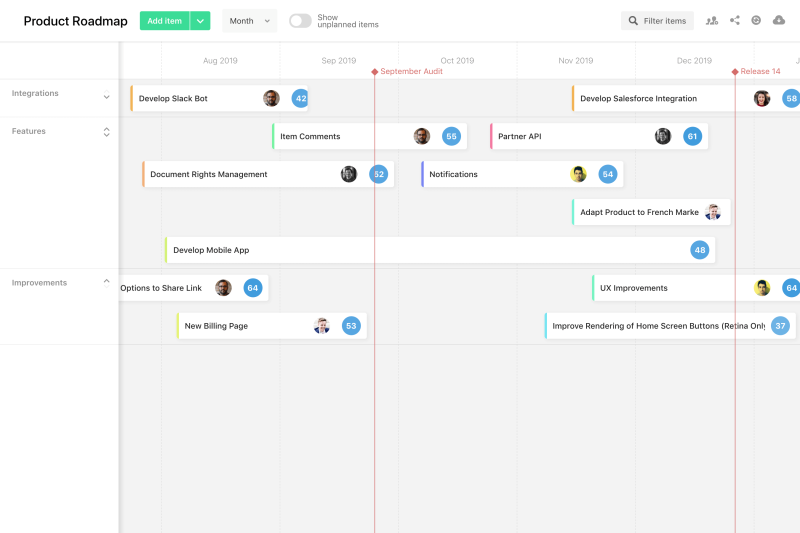
Progress-based roadmaps will focus on the current status of the things you’re working on. This is usually visualized in a kanban board, where tasks are grouped by their status, for example, backlog / doing / done. These are the most commonly used types of roadmaps in agile teams as they offer flexibility to easily adapt as your roadmap evolves.
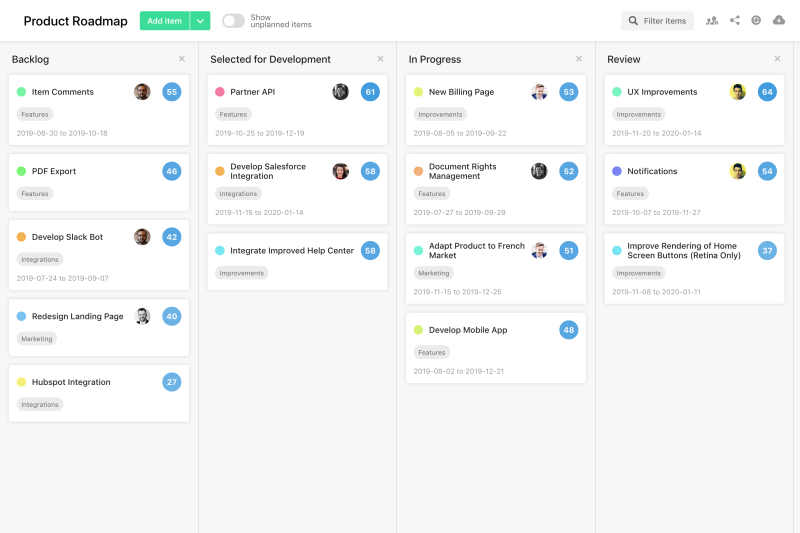
Depending on your use case, you may decide to opt for a:
Board view: to get all teams on the same page about the product’s overarching strategy and progress of feature development.
Timeline view: to view the interdependence of feature development or initiatives over time so that everyone is aligned and working to the same schedule.
Above all, you should be sure to only include information that is necessary. Every extra piece of information you add to your roadmap will add an element of complexity and confusion and may actually distract you from discussing (and deciding on!) the right things.
If in doubt, keep it simple.
Purpose-built roadmapping tools will allow you to filter your roadmap to ensure that you’re only showing relevant information to each type of audience.
How to get started with a product roadmap
Know your product (and company) vision

It's impossible to start building a roadmap without considering the strategic context of the roadmap. The three most important questions to answer are:
What the product needs to achieve — to answer this, you’ll need to put the big picture company goals and strategy front and center.
Why you’re building it — how the tasks your planning contribute to the ‘what.’
Who is the product is for — ultimately, product teams are working towards amazing customer-centric products with the power to change the world. So before you start planning, you need to be clear on who you’re building for.
The answers to these questions come from talking to stakeholders and truly understanding the mission of your product. This is then distilled into a simple statement that everyone involved in the product development process can understand, known as a 'Product Vision.'
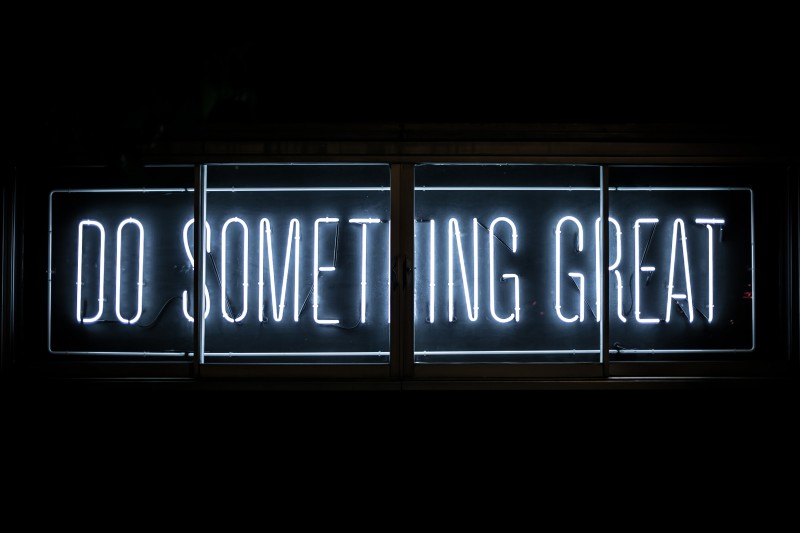
Consider Google's mission statement:
Organize the world’s information and make it universally accessible and useful.
It's only 11 words but explains so much about what Google is trying to achieve. Whether you are working on Google Maps, Gmail, or Google Search, it is easy to sense-check if what you’re working on contributes to this mission.
Depending on your role in your organization, you might not be able to write a vision like Google's, but you can set a vision for your product or project. This should also work towards achieving the mission of your organization.
By starting with a strategy-first approach, building your roadmap becomes much simpler, as you can:
Park any items which do not contribute to achieving your goal.
Easily explain decision-making to stakeholders, ensuring everyone is on the same page early in the project.
More easily prioritize possible tasks by only focusing on the things that deliver the greatest value.
Prioritize product features
Prioritizing what to do and in what order is difficult. Often, these decisions are made based on politics, emotion, or a vocal member of management.
But, there is a better way!
Using a d makes these decisions data-driven and easy to justify to stakeholders. With this data, you can have objective conversations and get a consensus on product direction quicker.
How to prioritize the items that make it to your product roadmap?
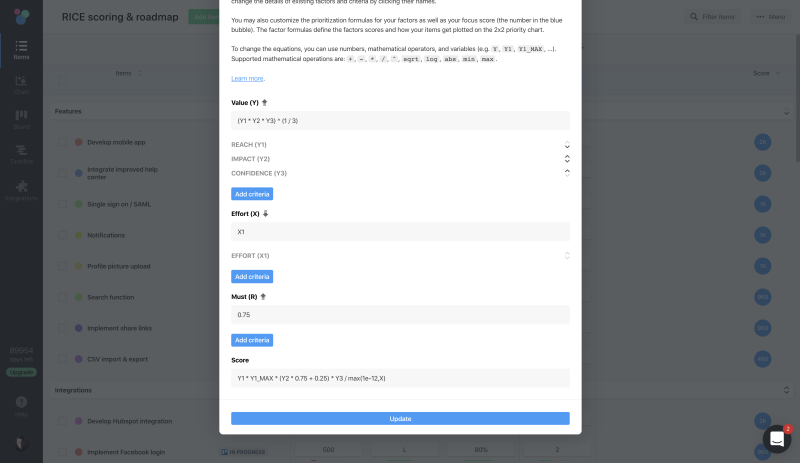
Set Key Criteria: Discover your key goals and risks. For example, these could be business value, costs, and risks.
Weigh Criteria: Give each of these items a weight-based upon how important they are to the project. If you are focused on business value, you could score the items as Business Value = 5, Cost = 2, and Risk = 4.
Scoring: On a scale of 1-5 (5 being the best option), score each item on your roadmap against the criteria.
Calculate: Multiple each of the scores by their weight, then total the scores. The highest scoring item ‘wins.’
Now you understand how to use this matrix, you can plan and explain your prioritization decisions to stakeholders or decline feature requests.
If you want to be even more collaborative, try running a virtual workshop and inviting subject matter experts to help you score the items.
airfocus includes a fun feature called "Priority Poker," which invites subject matter experts in your organization to help with the prioritization scoring process!
https://www.youtube.com/watch?v=i0ebWVXoO4Q&feature=emb_title
Get stakeholder buy-in
Even when your roadmap is based on objective decision-making, one of the biggest problems that product managers face is managing stakeholders.
Everyone involved in the process will have their unique perspective on how to build the product, what is most important, and where resources should be allocated.
But you can't keep everyone happy. If you try, you'll build an unfocused product that — despite best efforts — actually pleases nobody.
Thankfully, there is an alternative. By building your roadmap in collaboration with stakeholders from the start, you'll gain consensus from day 0. With consensus, the planning of feature requests becomes much less awkward.
Before building your roadmap, gain stakeholder consensus by:
Defining Measurable Goals: Establish clear goals (rooted in your product and company vision) before you begin. For example, you might be focused on growing revenue, reducing churn, or winning new types of customers.
Measuring Progress: Link these goals to your product vision. Ideally, a rise of X% in a goal should demonstrate progress towards achieving a vision.
Collaborate: Speak with colleagues in every department to understand their initiatives and how their priorities will fit into achieving the product vision. For example, have you spoken to the finance department about how reporting your new revenue will work? Does marketing have any needs that would help promote the product? Does engineering have technical problems that need to be overcome?
Find Themes: Start to put together the themes in your product roadmap. If you need to disappoint marketing to please engineering, be sure you can explain why. If you use a prioritization model, your decisions are data-driven rather than based on gut feeling, preventing objections and emotional disagreements.
Communicate: Return to each department with your initial ideas and explain why you prioritized each theme concisely. It should be clear how you intend to achieve the organization's goals and how certain initiatives and departmental concerns must be prioritized to achieve this.

With this consensus built into the roadmap, all stakeholders feel they helped create the route to success and understand how it will progress towards completion.
How to get started with your first product roadmap
Product Roadmap Templates
Depending on your team and your role, your product roadmap will vary significantly. Take a look at the templates below for inspiration and save time by tweaking them to match your product. Each template includes helpful suggestions for a prioritization matrix, which you can easily modify to match your goals.
Agile Roadmap Template
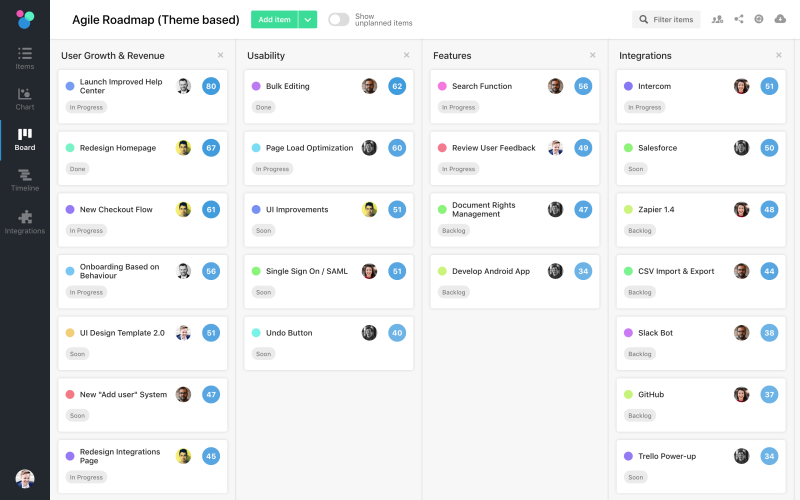
Agile roadmaps are often short-term plans (~2-4 months) and progress-based. To be as flexible as possible, usually agile development teams refrain from setting up due dates and deadlines. However, most stakeholders still want to know when work is done and when important milestones are being accomplished. Instead of including detailed timings, these roadmaps show rough estimations. Typical time units are months or quarters. While our first example is organized by different sprints ("Sprint 7", "Sprint 8", …), the other one focuses on product initiatives. Try our agile roadmap template here.
Software Roadmap Template
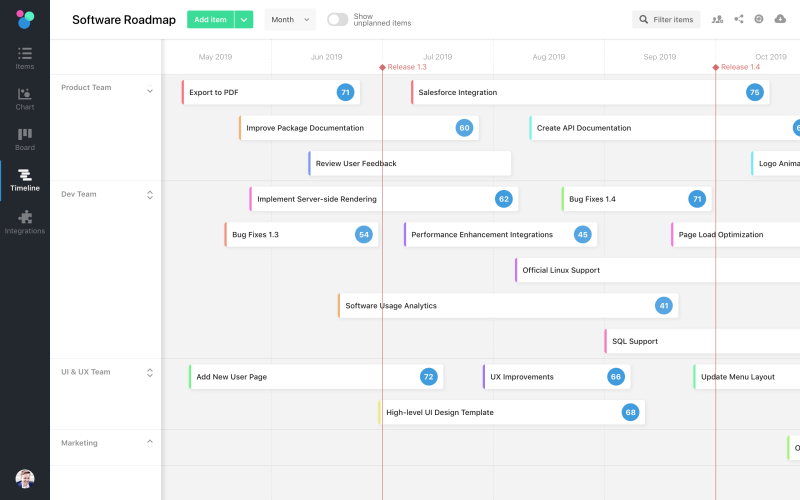
A software roadmap shows the high-level overview and the main steps in the process of developing software. It's often used by product teams or engineering departments and helps them understand what resources are required to build the product. Get started with our ready-to-go software roadmap template here.
Product Launch Roadmap Template
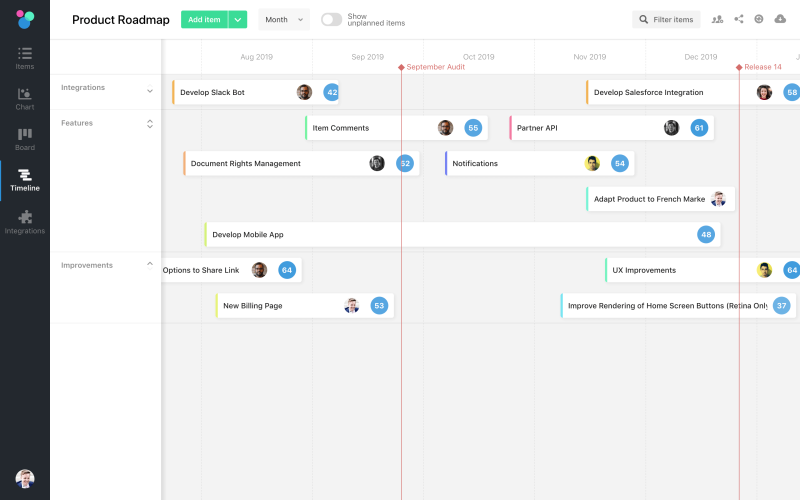
Getting ready for launch? Get the whole company together and coordinate engineering, marketing, PR, and sales teams to guarantee product launch success with our product launch template.
Product Portfolio Roadmap Template
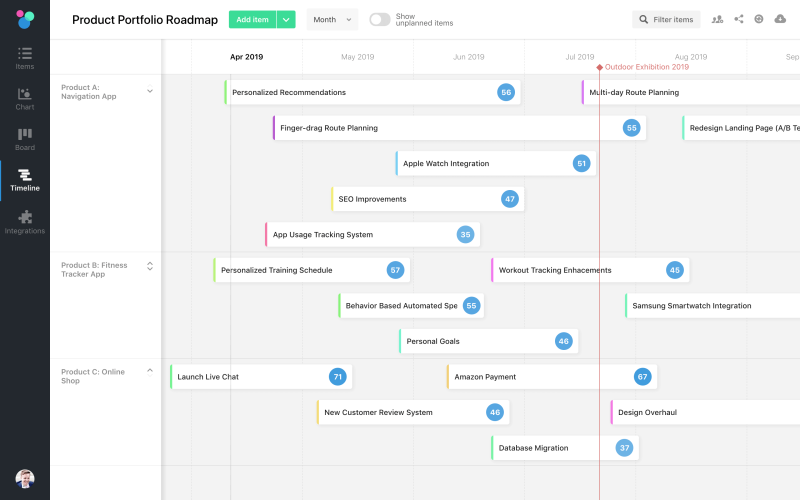
For product managers running multiple products at once, you'll need a high-level portfolio view. We've created a template just for you here, which lets you add and manage multiple products from one roadmap.
How to share your product roadmap
One of the most nerve-racking things for a first-time product manager is sharing their roadmap with stakeholders, the wider organization, and potential customers.
Follow these steps to calm your nerves...
Know your audience
There are several strategies to ensure that your roadmap gets the green light.
Who is your audience, and what do they want?
Consider why the audience is interested in your roadmap. Don't assume that the audience is like you and interested in product management.
An executive-focused roadmap will be focused on high-level themes and strategy. You should focus on the return on investment of the product or market data in the initial stages to support your plans.
However, as your project progresses, you'll need their support with short to medium-term issues, such as resources and staffing. Keep the tactical details to a minimum and show how solving the more immediate issues will make the long-term goal achievable.
If you speak to developers or engineers who will implement the project, inspire them with your mission.
As these teams spend each day working on implementing the project, they often lose sight of the bigger picture.
By taking a moment to look longer-term, you could gain valuable feedback, such as a technical commitment being made now, which would prevent work from being completed in the future. Then, switch back to provide the low-level details developers need to complete their most urgent short-term tasks.
If you are speaking with your growth team, their focus is to grow conversions, so they won't necessarily care about the technical risk or the complexities of product development. If a prospect needs a feature and it has a date on the roadmap, they might share that deadline with the customer to close a deal quicker.
When (or if!) sharing with customers, avoid committing to specific dates. Instead, provide approximate progress giving you some breathing room to catch up or change customers' expectations if required. This protects your long-term relationships with your customers should you fail to meet your targets.
The very best customer-facing roadmaps are transparent and encourage customers to get involved with their feedback throughout the process. This could be through beta testing, to get added value in exchange for feedback, or by inviting them to participate in user-testing events.
How knowledgeable is your audience?
Consider their level of knowledge and tweak how the information is presented to keep them interested and engaged. For a non-technical audience, drop the buzzwords and jargon. If you are sharing with customers, remove any internal abbreviations or language.
What does your audience want to see?
Use your roadmapping tool to tweak the visual appearance of your roadmap for its audience. For example, use a time-based view for strategic audiences or a status/progress view for teams focused on tasks.
Be sure to regularly communicate progress
One key reason stakeholders look at roadmaps is to understand how a project is progressing. Your stakeholders need to know you are working as effectively as possible towards achieving the project goals.

The easiest way to share status is to include a progress indicator on the high-level items on your product roadmap. This is usually communicated in a board view with statuses such as planned, in-progress, delayed, or completed.
Importantly, this indicator should be enough to demonstrate progress but not so detailed that low-level items start to fill your roadmap.
Should stakeholders need more details, this is something you can do in person. Having different audiences does not mean you need to build several roadmaps.
A good roadmap tool allows you to have several views of a roadmap. one for each audience group.
What’s the best product roadmap software?
As someone new to roadmapping, save yourself time and misery by choosing a dedicated cloud-based roadmapping tool instead of using traditional tools like PowerPoint.
These have useful features, such as:
Instant Updates: The roadmap is always up to date. When you update your backlog, all other backlogs update automatically. Even if the roadmap is shared through a link, the roadmap will always update automatically. This keeps stakeholders in the loop, preventing unnecessary meetings.
Exploration: airfocus enables you to create both progress-based views (Kanban board) and time-based views (Gantt chart). Looking at your strategy from a different perspective helps you make better decisions.
Visual Appeal: Your roadmap should be beautiful and easy to understand. Unlike a PowerPoint roadmap, your roadmapping software should enable you to always have beautiful roadmaps and not spend hours trying to update them and make them look good.
Strategically Helpful: The best tools, like airfocus, even include features that help you think clearly and strategically. For example, airfocus has an in-built prioritization matrix that can help you prioritize your initiatives and overcrowded backlog. You always should decide wisely what items should make it to your roadmap to make the most out of limited resources. Priority poker is another feature that airfocus provide to help your team’s voice be heard and get people involved in the prioritization process.
How to make a product roadmap with airfocus
Creating a product roadmap is simple with airfocus and can cater to any audience or use case. Remember, you’ll need to carefully select a product roadmap depending on who your audience is and how you’ll be using it. Thankfully, airfocus comes with in-built filters so that you can modify your roadmap to only show the most relevant information to each audience.
1. Start by selecting the product roadmap template. We offer pre-built templates that fully adjustable and built on proven decision-making and roadmapping methods. So if you need other product-related roadmap templates, there are tons of options for you to choose from. Adapt them to your needs if required. You can do that right in the beginning or later on.
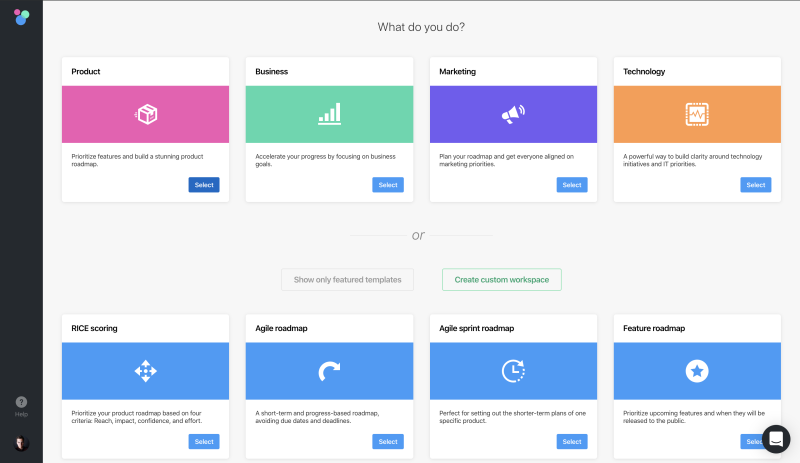
2. Add your Projects, features, and initiatives manually or import them from your existing tools. airfocus integrates Jira, Trello, Asana, GitHub, MS Planner, or CSV, as well as 1000+ other tools.
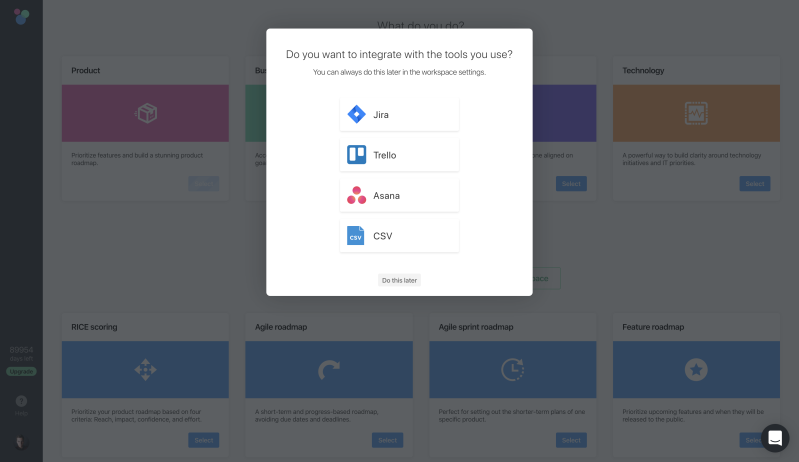
3. Share your roadmap in minutes through a shared link so that everyone is aligned with your strategy. Define precisely what information your audience should see.
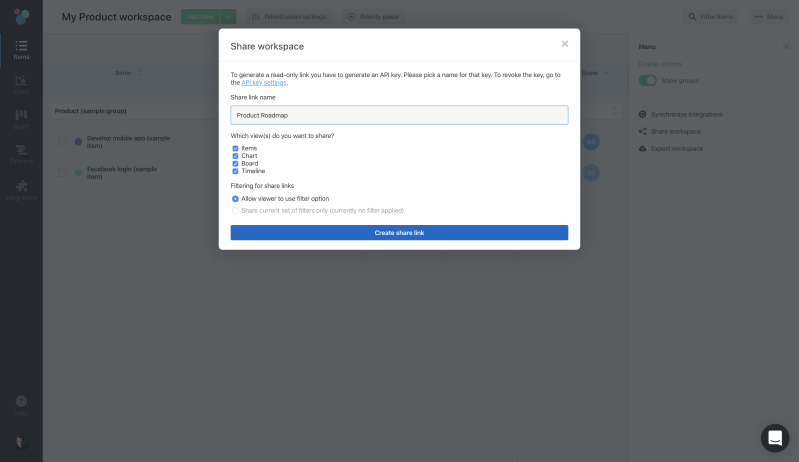
4. Optionally, you can prioritize the items and projects that go to your roadmaps and map your priorities on a chart to better understand what projects are most important.

For a more in-depth breakdown of the best roadmapping software, check out our article on the best roadmapping software in 2020. Get Started
Hopefully, you've now graduated from beginner to roadmapping expert.
If you skipped the whole article looking for a TLDR, you've found it:
A product roadmap is the most valuable tool in the product professional toolkit. In essence, it is a high-level document that helps you lay out the vision and strategic direction of your product over time.
A great product roadmap will help you gain the support of stakeholders, motivate your team, and make objective decisions.
You can make objective decisions about what features to include or exclude using a prioritization matrix. Using a weighted scoring method makes these decisions data-driven and easy to justify to stakeholders.
A roadmap is something that will constantly evolve. Remember: this is a tool that aligns your planning with your strategy, so as your company goals change, so too with your roadmap. And that’s okay!
A roadmap is a visual tool that helps to communicate the most important information to different audiences. Some roadmap views will be time-based, others will be progress-based, and the one you choose will depend on your audience.
The quickest (and best) way to create a roadmap is to use a dedicated roadmapping tool that allows you to transform your roadmap depending on your audience.
You can save yourself time and energy by using a pre-built but fully customizable template.
The best way to get started with roadmapping is to use airfocus.
Trusted by thousands of product professionals just like you, at places like Nike, airfocus is the best way to make and manage your product roadmap. Why not give it a go.

Andrei Tiburca

Read also



Build great roadmaps

Experience the new way of doing product management




